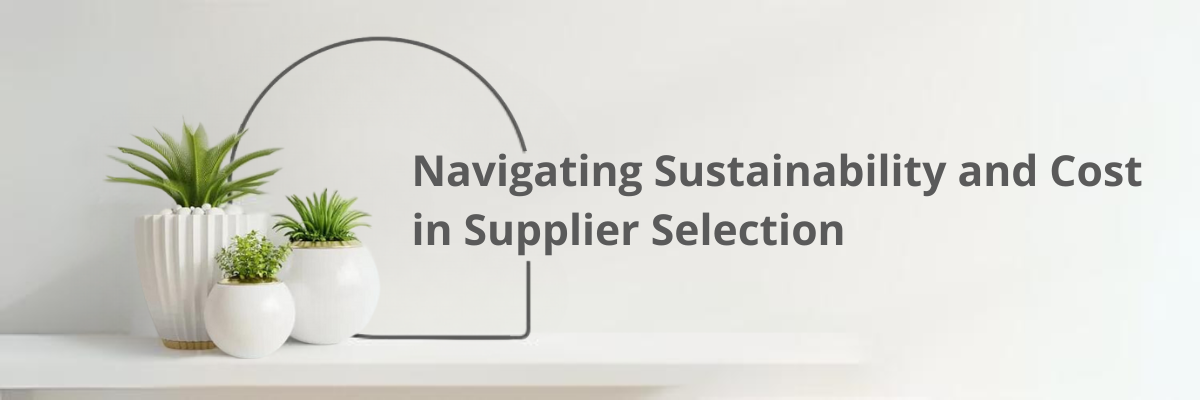The concept of sustainability has become a central element in modern business operations, pushing organizations to revisit and renew their procurement processes. Today’s post delves into orthogonal approaches to optimizing sustainability, presenting a comprehensive guide on striking the right balance between environmental responsibility and cost-efficiency. This blog post draws insights from Keelvar's Buyer's Book Vol. III.
Understanding Orthogonal Approaches
When we talk about orthogonal approaches in the context of sustainability, we refer to strategies that are independent and unbiased, ensuring a comprehensive view in decision-making. For businesses aiming to bolster their sustainable practices, this translates to a meticulous evaluation of suppliers based on their environmental impact and cost.
The Stick: Penalizing Polluters
One straightforward strategy is the “stick” approach, where businesses implement penalty mechanisms to discourage engagement with suppliers that have a significant environmental footprint. By imposing a bias against high-emission suppliers, businesses reduce the likelihood of awarding them contracts. The penalties can be proportionate to the level of emissions, with a progressive scale ensuring that major polluters bear a heavier burden. This approach is assertive, pushing businesses to take a firm stand against environmentally detrimental practices.
The Carrot: Encouraging Sustainability Through Budget Allocation
Conversely, the “carrot” approach adopts a more encouraging stance. Here, businesses allocate a specific portion of their budget to sustainable sourcing, optimizing for eco-friendly suppliers within this financial bracket. Sourcing teams play a crucial role, determining the feasible amount to allocate toward sustainability for each project. By leveraging tools like a sourcing optimizer, businesses can analyze various scenarios and business rules to identify the optimal allocation of contracts, favoring suppliers with modern, low-emission fleets. This method nurtures a gradual but steady shift toward sustainability.
Scoring for Success: Evaluating Supplier Performance
To ensure a balanced and fair evaluation, businesses can adopt a scoring-based mechanism that assesses suppliers based on cost and sustainability. Key to this approach are two bid sheet columns:
- Price: Where suppliers enter their bids for each lane.
- Total GWP (Global Warming Potential): Calculating the total emissions factor.
Through a series of feedback formula columns, businesses create a standardized score, considering the weight assigned to Price (X) and Total GWP (Y), ensuring the sum of X and Y equals 100. The use of median values in calculations mitigates the impact of outliers, ensuring a fair and balanced evaluation.
Finding the Sweet Spot: Balancing Cost and Sustainability
The final step involves summing the standardized variables, providing a comprehensive score that ranks suppliers based on both cost and environmental impact. By creating various scenarios for each Price/Total GWP split, businesses can determine the most sustainable option within their budget. It’s a delicate dance, as tilting too heavily toward sustainability can escalate costs. However, with careful analysis and scenario planning, businesses can identify the optimal trade-off, ensuring both financial stability and a commitment to environmental stewardship.
A Journey Towards Sustainable Prosperity
Navigating the path to sustainability is no small feat. It requires a thoughtful, data-driven approach, balancing cost and environmental impact. By adopting orthogonal approaches and leveraging tools like sourcing optimization, businesses can make informed decisions, propelling them towards a greener, more sustainable future without breaking the bank.
Let’s embrace this journey, making conscious choices that benefit both our organizations and the planet.

.png)
-2.jpg)

